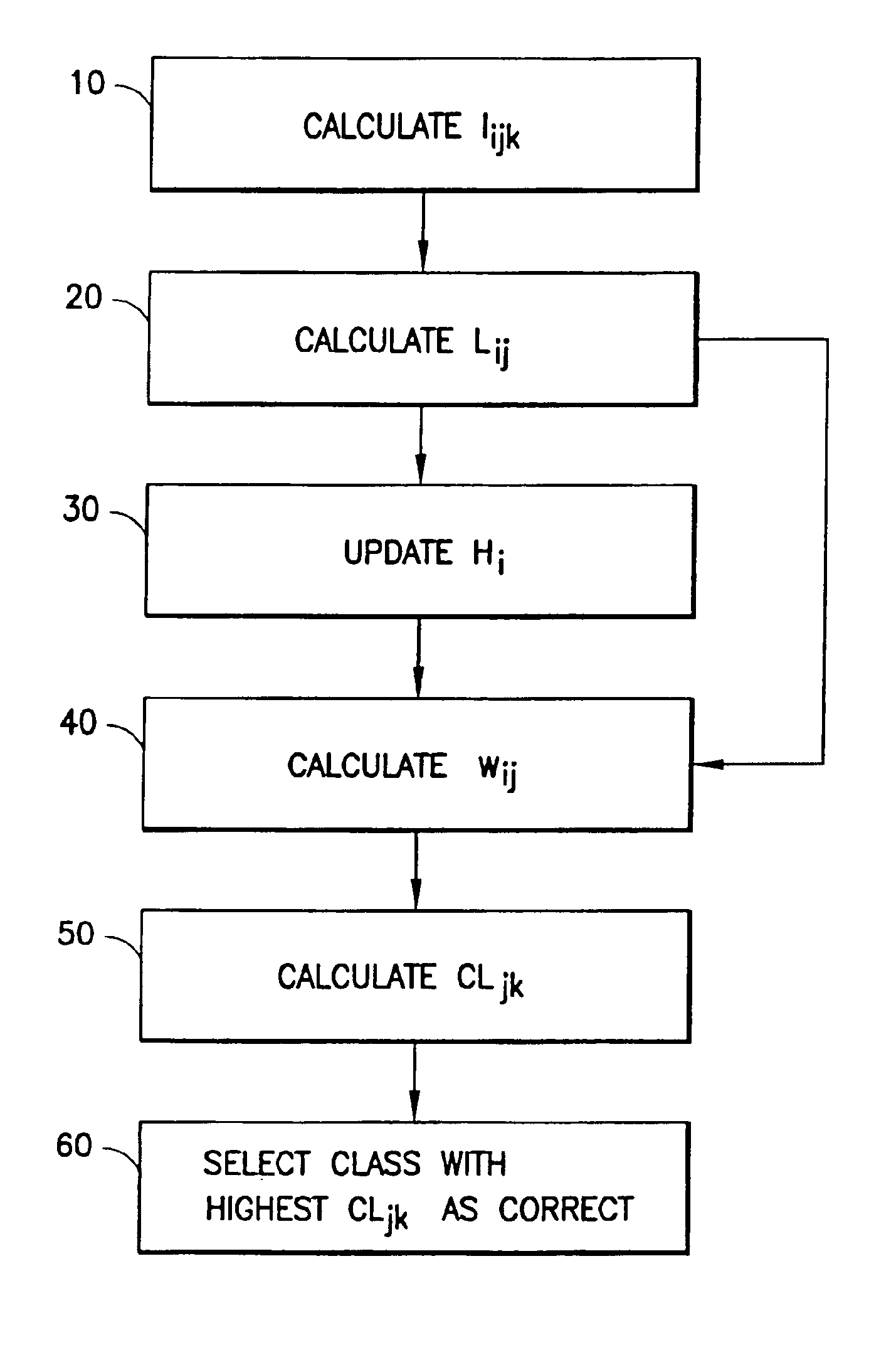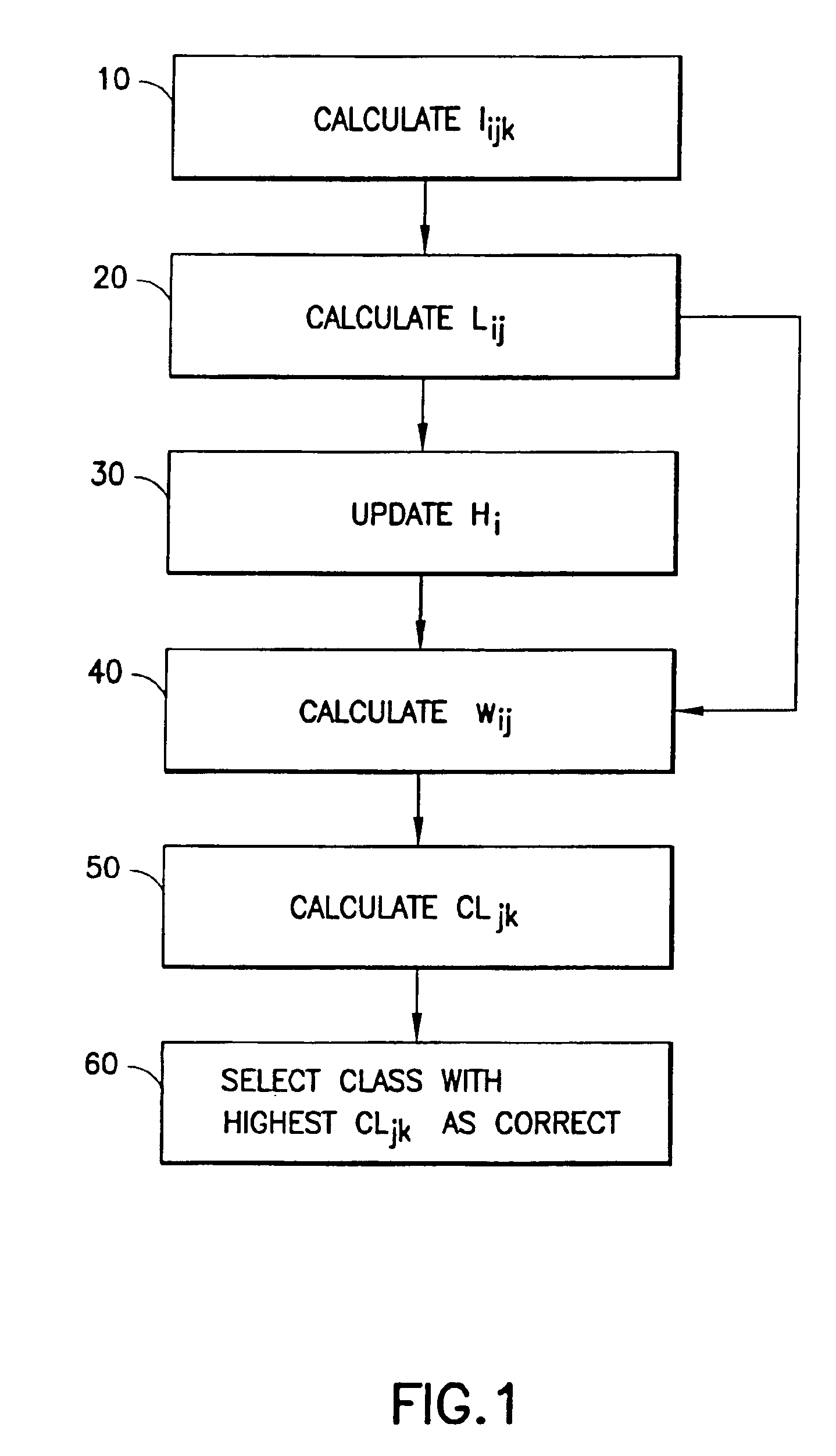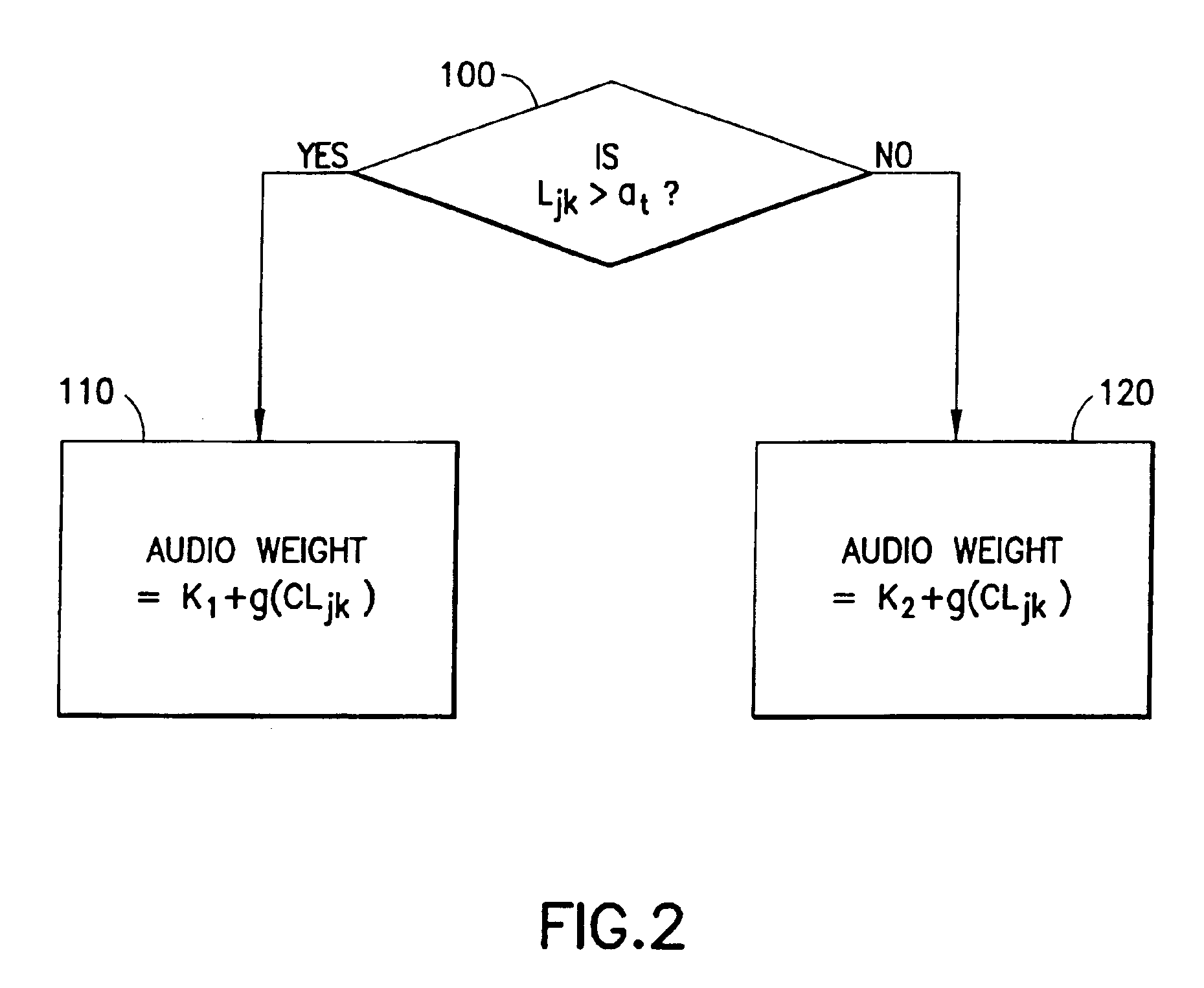Decision making in classification problems
a decision-making and problem-solving technology, applied in the field of decision-making in classification problems, can solve the problems of one kind of errors or limitations, none of the above approaches are rigorously optimal or universally applicable, etc., and achieve the effects of improving performance, improving classification accuracy, and improving classification accuracy
- Summary
- Abstract
- Description
- Claims
- Application Information
AI Technical Summary
Benefits of technology
Problems solved by technology
Method used
Image
Examples
Embodiment Construction
[0029]An embodiment of the invention is described below in the context of an audiovisual speech recognition application which uses fusion for classification problems. In this context, there are two relevant classifiers: audio and video.
[0030]In overview, the classification or recognition process initially involves steps as outlined in FIG. 1, Initially, in step 10, the process involves calculating a metric of relative confidence for respective classifiers or class models which predict how a sample should be recognized. Lij is calculated in step 20 as an L-statistic of the log-likelihoods lijk, as detailed below. The moving average Hi, across a suitable number of samples j is then determined in step 30. This allows weights wij to be calculated in step 40 for each classifier using Hi and Lij, according to a suitable function as detailed below. The combined likelihoods across classifiers CLjk are then calculated in step 50 as a weighted summation of the likelihoods of each class, so th...
PUM
 Login to View More
Login to View More Abstract
Description
Claims
Application Information
 Login to View More
Login to View More - R&D
- Intellectual Property
- Life Sciences
- Materials
- Tech Scout
- Unparalleled Data Quality
- Higher Quality Content
- 60% Fewer Hallucinations
Browse by: Latest US Patents, China's latest patents, Technical Efficacy Thesaurus, Application Domain, Technology Topic, Popular Technical Reports.
© 2025 PatSnap. All rights reserved.Legal|Privacy policy|Modern Slavery Act Transparency Statement|Sitemap|About US| Contact US: help@patsnap.com



